by Margaret Sgarra, contemporary art curator
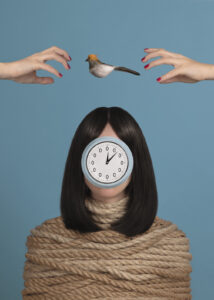
Marta Scavone is an artist from Turin, born in 1998, who blends various expressive means to create visually and conceptually stimulating images. In 2017 she graduated in Fashion Design at the art high school and in 2020 she graduated with honors in Photography at the IED institute in Turin. Multidisciplinarity is a key word in her artistic approach. In fact, her work combines photography, fashion, artistic installation and theatrical performance with the aim of exploring contemporary themes in a conceptual and creative way.
When and why did you get into photography?
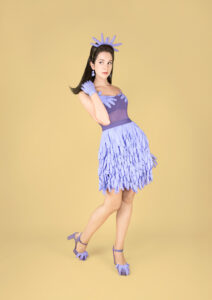
I approached photography during my last year of art high school, after completing a course of study related to fashion. I felt the need to explore a new medium, which would allow me to express my creativity in a more direct and personal way. Following in part in the footsteps of my maternal grandfather, who was a photographer, I decided to enroll in the photography degree course at the IED in Turin. During my university years I fully understood the expressive potential of photography, especially when it interacts with my other passions: theater, dance, painting. It was during that period that I chose to make it my main language, because it is a medium capable of going beyond the simple documentation of reality, and becoming a tool for building imaginary, dreamlike and symbolic worlds. I therefore like to define my approach with the phrase: “I use the camera as a tool for creation and imagination“. For me, in fact, taking pictures also means designing and building. Through installations, scenography and objects full of meaning, I transform the photographic space of my studio into a real visual theater, where each element tells something to be deciphered.
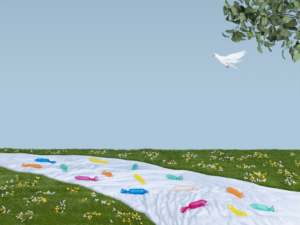
In your photographic research we find society and its critical issues as a constant. What do you think is the role of the artist in this context?
I believe that the role of the artist today is to observe the world around him with attention and sensitivity, and then to give back a personal and profound vision of it. In my case, each work is born from an inner need to understand better what is around me: it is a sort of visual study, which I approach with a curious, ironic and, at times, childish gaze. Through art I try to translate reflections on social issues and share them in complex visual narratives, as if they were puzzles, which invite the viewer to decipher their meanings. I think that the artist can contribute to generate awareness, to stimulate critical thinking and, in a certain sense, to encourage small changes in the collective perception of reality.
Your works have a design part, a technical part and a conceptual one. Where do you start making them and when you understand they are finished?
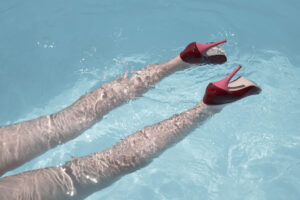
The making of my works is quite complex and requires a long time, because it is marked by the need to fully understand the ideas I want to express and find the most effective way to translate them into images. Everything starts with drawing. Each concept takes shape in my notebooks, through sketches, notes and reflections which help me to visualize the composition and details of the final photograph. When the idea reaches its design maturity, I move on to building the set, which represents the heart of my work. My photography studio transforms into a visionary laboratory, where each element – from the backdrops to the panels, from the vegetation to the objects – is carefully constructed or selected to give life to an immersive and meaningful visual universe. My body also enters the scene, often becoming an integral part of the composition, in a continuous dialogue with the built environment. The actual creation of a work can take months, including the research of materials, construction, photo sessions and post-production. I understand that a work is finished when I can look at it and feel that every element has found its place, that the narrative is complete and resonates with the original idea that generated it.
Are there any photographers you particularly admire or who have influenced your work?
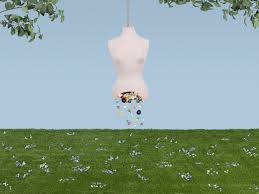
Of course there are photographers who have played an important role in my educational path and whom I continue to deeply admire. Cindy Sherman, for example, for the way she uses her body as a means of expression and an instrument of transformation. I find it fascinating how she manages to tell complex and layered stories through the construction of characters and scenarios, an approach that I feel very close to my own. Sandy Skoglund, on the other hand, struck me for her ability to create surreal and immersive environments, through a meticulous use of scenography and color. Her work is a perfect example of how photography and installation can merge to give life to alternative worlds, built down to the smallest details: a process very similar to mine, in which every object and every element has a precise role in the construction of meaning. Finally, although he was not a photographer, I feel I must mention the painter Magritte, as he profoundly influenced my way of conceiving images. His visual language, apparently simple but full of ambiguity and hidden meanings, taught me how powerful the visual metaphor can be. Like him, I am interested in creating “puzzles” to decipher, images that pose questions rather than giving immediate answers, opening spaces for reflection on reality through the absurd, the poetic and the unexpected.
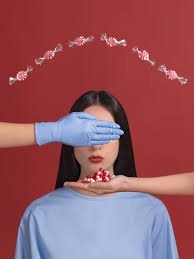
You are very young and have already took part in many exhibitions and fairs in Italy, Paris and New York. What is your dream as an artist?
My greatest dream is to be able to exhibit my works in internationally renowned museum institutions, becoming part of permanent collections. Places like Castello di Rivoli, MoMA in New York or Tate in London represent for me not only important goals, but ideal spaces in which my work could dialogue with the public in a deeper and more lasting way.
What are your next projects and what are you working on now?
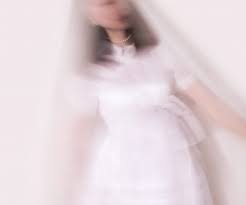
I am currently working on my most recent photographic series, “Bazaar of the Unconscious”. It is a long-term project of surreal self-portraits, in which I explore contemporary social issues through dreamlike images, symbols and suggestions coming from my unconscious and dreams. In parallel, I am developing the theoretical and visual part of a new multidisciplinary project, always focused on self-portrait, but with a more performative and theatrical approach. In this case too, the aim is to investigate the dynamics of our society, but from a different perspective, more corporeal and immersive.